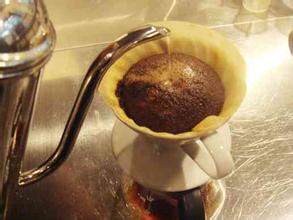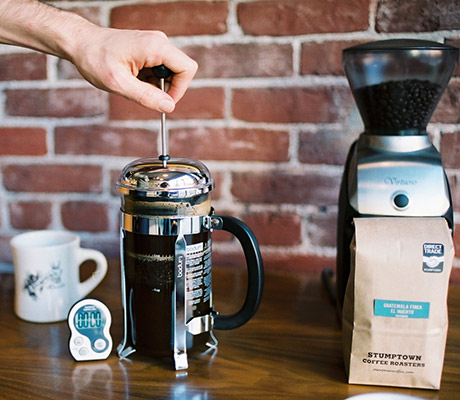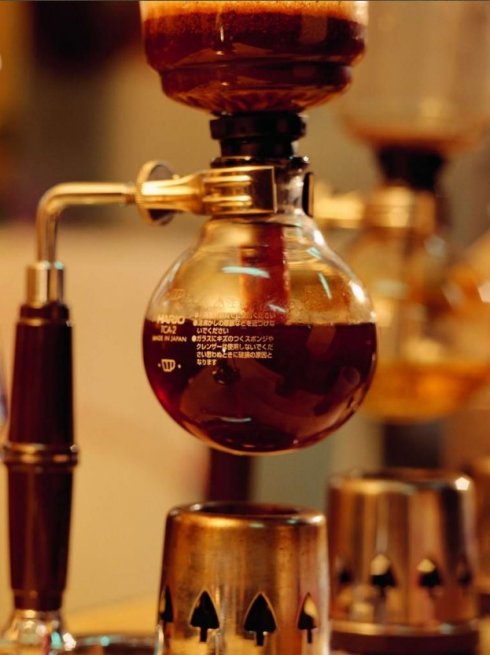Boutique coffee beans: the origin of the third wave of boutique coffee to understand the history of coffee
If you love coffee and have always been keen on adding milk and sugar, or only pursuing the sweet coffee of caramel macchiato, or fancy coffee with cream and chocolate sauce. Then you may be about to-- OUT! Because at present, a new wave of coffee has hit, and the dark tide is surging in the land of China, it is the third wave of coffee revolution-boutique coffee.
Coffee is like fashion, a new trend has come. Before this trend sweeps our lives, editor momo will introduce it to you first, so that we won't be able to cut in when we talk about coffee fashion in the future. Are you ready? ^ _ ^
What is the third wave of coffee? In fact, it is the third direction of coffee development. The first wave of coffee, we can think of it as the wave of instant coffee after World War II; the second wave of coffee is a mixture of espresso and basic coffee with other ingredients. These two waves of coffee have developed to a high level and have made great contributions to the promotion of the whole industry. So what is the third wave of coffee?
Chinese coffee drinking habits are changing: from three-in-one instant coffee to fancy coffee represented by Starbucks, more and more people are beginning to accept drinking pure coffee without sugar and milk to taste the pure flavor of coffee beans. Anyone who just needs to order a cup of pure coffee to experiment with it will find that the road to pure coffee, which it calls the "third wave of coffee revolution", is not very easy-it is too bitter. Because instant coffee and fancy coffee are mixed with too much sugar, milk, chocolate and other seasonings, deep-roasted coffee beans have always been welcomed by the Chinese, in which bitterness can neutralize the sweetness of the seasoning. In fact, it is the popularity of fancy coffee that disturbs the taste buds of Chinese people tasting pure coffee, just like tasting tea, Chinese people can drink very bitter green tea, of course, they can also accept this pure coffee with full flavor.
Recalling that the first wave of coffee sprang up in instant coffee, represented by "Nestle" and "Maxwell", "delicious" and "Didi fragrance" are almost the opening remarks of coffee enlightenment education in the mainland.
At that time, Chinese people involved in coffee were resistant to black coffee, which was popular in Europe and the United States, so Nestl é launched a bitter-free 1-to-2 mixed coffee and demonstrated its blending method in advertisements. In the sweet taste of the cream companion, the Chinese coffee journey begins.
However, it has not only led to the Chinese people's familiarity and understanding of the word coffee, but also buried a lot of hidden dangers at the same time. In the impression of most Chinese people, coffee is "Nestle", coffee is "bitter", and coffee should be mixed with "partner". No, no, no.
The second wave of coffee is gradually driven by Italian coffee represented by Starbucks and Costa in Europe and the United States after instant coffee.
In China, the first second wave of coffee appeared on the basis of the first wave of coffee, with the gradual increase in the awareness of coffee among Chinese people and the Chinese market, and the emergence of conceptual cafes that mimic the rise of the second wave of coffee in Europe and the United States. One of these cafes is a caf é that defines the business function of coffee. Luxurious decoration, high-end positioning, only business businessmen are willing to pay for it.
The other is in the form of independent cafes, with unique decoration, a group of audience, suitable for young people, and the literary and artistic style revealed everywhere intoxicated the petty-bourgeois youth.
Since then, small cafes of different styles have sprung up, and most people who open cafes are usually complex and non-commercially driven.
In this period of coffee trend, coffee culture has always been a top-down pyramid spread. Businessmen bear the cost of coffee shops, while students act as pioneers of coffee culture. Many cafes choose to open near universities, where young people are willing to accept new things. However, because the owners of these cafes focus on the environment of the coffee shop, they often ignore the selection of coffee beans, the production and technology of coffee, and the promotion of coffee culture. in short, most of the second wave of cafes sell concepts and environments. This has had a bad and far-reaching impact, because the second wave of cafes focuses on the environment while neglecting the quality of coffee itself (such cafes are now filled with the streets of every city. Coffee shop owners know little or nothing about coffee production, and there are many people who have accepted the concept of fine coffee, but give up making boutique because of market problems and turn it into a curry restaurant in response to market demand. As a result, most people don't know what a good cup of coffee should look like. Many of my friends say that they can't tell the difference between instant coffee and coffee in a cafe, or mistakenly think that good coffee is bitter coffee.
At the same time, Starbucks, the representative of the second wave of coffee in Europe and the United States, has explosively developed and expanded in China, and the "third space" built by Starbucks in the world has become the reason why people are infatuated with it. "in such a space, people's relationships are free and equal, without a sense of hierarchy in the workplace and without the shackles of various roles in the family, people can release themselves." Compared with the previous small cafes, Starbucks has built a perfect social and identity space. For the first batch of senior white-collar workers who patronize Starbucks, Starbucks has become "standard" for some kind of identity: high-income, tasteful and in line with international standards. Take Shanghai, the home of foreign companies, as an example: Starbucks' sales in Shanghai reached 100 million yuan in two years after opening its first store on Shanghai Huaihai Road in 2000. Customers who know nothing about coffee but are curious can also feel relaxed at Starbucks. It has a stylish decoration and a comfortable atmosphere, but it is not as aggressive as other literary cafes. This is the kind of atmosphere Starbucks strives to create. It thoughtfully considers the habits of Chinese customers, such as Chinese consumers who prefer to eat in or near their stores, so most Starbucks stores in China offer more food and seats than in the United States. Considering that Chinese people like hot food, each store also has an oven, which makes Chinese customers who are used to drinking coffee in the afternoon or evening begin to patronize frequently in the morning.
Of course, it cannot be denied that the people-friendly concept of the second wave of cafes has indeed led to Chinese recognition and intimacy of coffee, and greatly enhanced the cultural heritage and taste of the whole people of a city.
The third wave of coffee can be said to be a revolution.
It is precisely because the market is now filled with a large number of products that fail to restore the quality of coffee itself, confusing the public's correct understanding of coffee, leading to the emergence of a group of advocates who really love high-quality coffee. They insist on providing fine coffee, spread authentic coffee culture, have exclusive cultural meaning, and provide coffee directly from the country of origin, as well as its own culture and technology. So it can relatively attract people who really like coffee. This kind of coffee shop, whether from the source of raw beans, roasting of coffee beans, the production of coffee, and even the selection of coffee cups have strict regulations, the aim is to return the coffee to its true quality. The person in charge of this kind of coffee shop often has a deep attachment and understanding of boutique coffee and has the skills and knowledge including coffee bean roasting, coffee tasting and coffee making. It should be noted here that tasting coffee requires artistic feelings, but making coffee requires a rigorous scientific formula, including the shelf life of coffee beans, the water temperature of brewing coffee, the method and time of water injection, and so on, often accurate to 1 degree Celsius and a few seconds.
The third wave of coffee is boutique coffee, that is, coffee beans grown in manors from various coffee-producing countries. The third wave of coffee, drinking is pure coffee, that is, do not add any other ingredients except water medium. The third wave of coffee is a natural, healthy and organic endorsement. The third wave of coffee is the coffee that is closest to the natural extraction of coffee as the main production tool, or the coffee extracted by pure soaking. The third wave of coffee, the service should be exclusive, non-mainstream, refined service. The third wave of coffee, the practitioners themselves are experts in coffee. The third wave of coffee, drinkers are connoisseurs who pursue the "regional flavor" of coffee.
The third wave of coffee in the United States to Stumptown, Intelligentsia, counter-culture led by the sudden rise of coffee shops shallow roasting under the perfect interpretation of the nature of coffee of origin, a variety of flowers, lemon, citrus, berries, nuts, rich flavor to satisfy coffee fans' taste buds, is indeed the gospel of coffee customers, may this third wave of coffee revolution start around us as soon as possible.

Source:
The blog of Mavericks Coffee
Important Notice :
前街咖啡 FrontStreet Coffee has moved to new addredd:
FrontStreet Coffee Address: 315,Donghua East Road,GuangZhou
Tel:020 38364473
- Prev

Coffee brewing method: an introduction to the history of French Press- pressure pot
The historical instrument of the French pressure kettle-the French pressure kettle, can also be called the tea maker-FrenchPress. As early as 30 years ago, AlfredPeet, founder of PeetPeets Coffee Tea, a famous roaster in the Berkeley district of the West Coast of the United States, made every effort to promote this convenient, fast and effective way of brewing. Pitt believes that only by using French pressure
- Next

Coffee brewing method: Siphon pot history introduction and operation method
Siphon pot is the use of siphon principle, boiling water coffee powder, stew coffee flavor. Applicable coffee: slightly sour, medium alcohol coffee grinding degree: slightly coarser than powder, close to special grain fine sugar. Siphon coffee, let the living room into a coffee shop siphon brewing coffee, is a lot of coffee fans favorite. Some people say that because it can extract the most perfect parts of coffee, especially
Related
- What is the meaning of lactic acid fermentation with coffee bean treatment?
- How to judge the state of foam by sound?
- How does the latte pull out the unicorn pattern? Come to get for a little trick to improve the flower pull!
- Will flower pulling affect the taste of the latte?
- Do you know the history of coffee?
- The difference between honey treatment and sun washing what is raisin honey treatment?
- What kind of milk can a novice use to make coffee foam to keep the foam longer? The correct method and skills of milking tutorial sharing
- Why do washed coffee beans taste sour? Flavor characteristics of washed Coffee
- Introduction to the skill of how to practice the size and height of water injection around the circle of hand-brewed coffee
- How do beginners practice coffee flower drawing from scratch?

